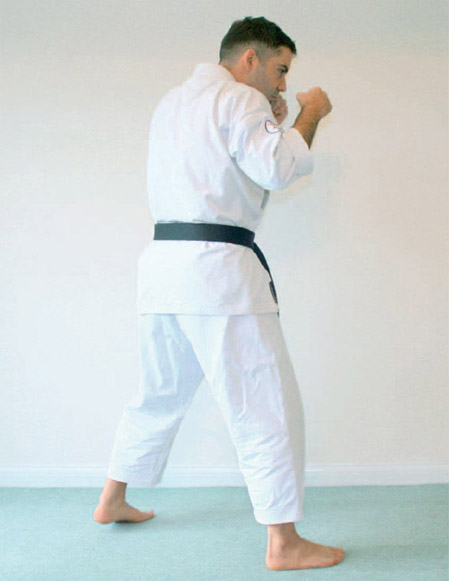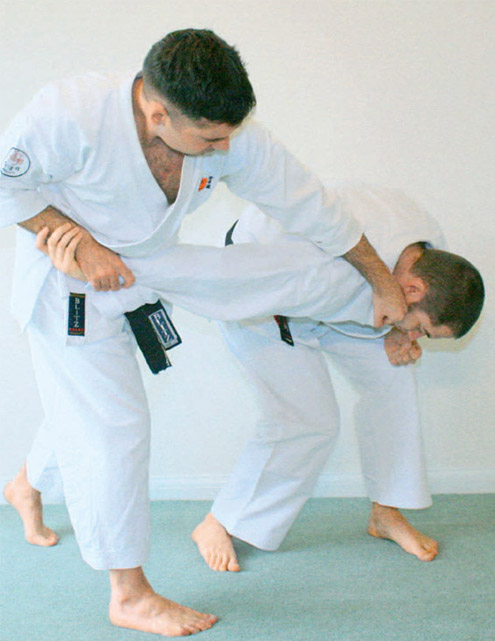
The ultimate measure of a man is not where he stands in moments of comfort and convenience, but where he stands at times of challenge and controversy.
~ Martin Luther King
Learning the Aspects of Fighting
There are many aspects of fighting. A combatant might try to strike his opponent using punches and kicks in an effort to either incapacitate him, perhaps with a knockout blow, or to weaken him so that it would be subsequently easier to land that finishing blow. This immediately leads to another aspect of combat, that is to defend against such attacks, either by blocking them with a tough part of the body, such as an arm or a knee, or to deflect them with a well-timed parry, or to avoid the attack altogether with skillful evasion. Very often in a fight, combatants will find themselves at such a close range that punches and kicks become impossible to use effectively. In close range fighting, elbows and knees might fly while the fighters grapple-pushing and pulling each other in an attempt to gain an advantage. The grappling might allow one fighter to trip or throw the other to the ground. The fight might end there, especially if the ground is hard and the fallen warrior lands heavily. Very often the fight will continue on the ground where a skilled martial artist will look for ways to painfully force joints against their natural range of motion, or to apply a strangle hold that will render an opponent unconscious.
There are many martial arts, all differing in their approach to fighting, but there are few that deal with all the many aspects of fighting. Instead it is more common for a particular martial art to consider a few aspects more important and to focus on them. In order to truly understand the martial arts and be able to confidently defend yourself, you need to cover all the aspects of fighting. One way to do this is to train in more than one martial art and so picking up complementary skills that fill the gaps that one lone martial art would otherwise leave.
If you have already studied a martial art, this book offers guidance on how to expand your skill set and become a complete martial artist, filling the gaps in your knowledge. If you are completely new to the world of martial arts you might be wondering which of the many martial arts to learn. This book covers the range of martial arts popular today, allowing you to find the one that fits your needs and interests.

CHAPTER ONE—THE WAY OF THE WARRIOR
Martial arts have played various roles throughout history. They have evolved from being necessary tools used for fighting wars into methods of civil self-defense and self-cultivation or into sporting activities. Chapter 2 examines the advantages and disadvantages of competitive sparring. It also discusses the limitations of studying a single martial art in isolation and the importance of cross training in different martial arts.
CHAPTER TWO—A CATALOG OF MARTIAL ARTS
There are dozens of martial arts-hundreds or even thousands if all the different styles and sub-styles are counted. Chapter 3 gives a panoramic view of the different martial arts that are currently popular and analyzes how they came into being, how they are related, and what they have to offer to someone practicing them.
CHAPTER THREE—COMBAT BASICS
Before looking at the specific techniques that make up martial arts, it is important to examine the basic elements that make up a fight. Broadly speaking, there are three phases: the striking phase, the grappling phase, and the ground-fighting phase. Chapter 4 discusses these phases of combat and how they relate to each other. The basic fighting positions from which techniques are performed are also described in this chapter
CHAPTER FOUR—HAND AND ELBOW STRIKES
The advantage of using your fists and elbows to strike is that they are fast and relatively easy to learn as they don't require any special flexibility training. Chapter 5 describes how to make a fist so that you can correctly punch as well as how to use the basic punches. It also covers how you can fight at close range using elbow strikes and how to use the slightly more exotic open-handed strikes.
CHAPTER FIVE—DEFENSES
Being able to defend yourself against an incoming attack is at the heart of self-defense. Chapter 6 describes how attacks can be blocked or parried using your arms. It also covers how to defend using evasive techniques like slipping or ducking which leave your hands free to counter attack.
CHAPTER SIX—FOOT AND KNEE STRIKES
The most impressive moves in the martial arts are kicks. Chapter 7 describes how to perform these powerful attacks as well as how to use knee strikes when at close range.
CHAPTER SEVEN—BREAK FALLING
Before practicing takedowns you need to learn how to fall safely. Chapter 8 describes the various ways of safely landing after you have been thrown or tripped. It also describes ways of recovering after the fall so that you can return to a fighting position.
CHAPTER EIGHT—TAKEDOWNS
Takedowns are techniques that bring your opponent from a standing position down onto the ground. This can be a damaging action itself or it can be a way to progress to ground fighting. Chapter 9 describes the various ways that you can take an opponent down to the ground using throws that lift and then drop an opponent, reaps that take an opponent's legs away from under him, and sacrifice throws that drag an opponent down to the ground.
CHAPTER NINE—LOCKS AND HOLDS
Locks and hold are techniques that can be used in close range grappling either on the ground or while standing. They can be used to restrain an opponent or to force them to submit. Chapter 10 describes how to use some of the more common arm bars that lock the elbow, wrist locks that twist or hyperextend the wrist, and chokeholds that can be used to restrict air or blood flow.
CHAPTER TEN—GROUND FIGHTING
Once a fight goes to the ground, high kicks and fancy footwork become useless. Fighting on the ground is not just about brute strength, however, and Chapter 11 describes some of the ways that you can gain the advantage while on the ground. This includes ways of pinning your opponent, the various guards that can be used to defend yourself, ways of getting past an opponent's guard, and how to use strikes while on the ground.
CHAPTER ELEVEN —
STRETCHING FOR THE MARTIAL ARTIST
Flexibility is essential for a martial artist especially if you want to do high kicks. Flexible joints are also useful if you are going to take part in any grappling because a greater range of movement will give you the edge when trying to escape or reach for a hold. Chapter 12 describes various ways of improving the flexibility of your legs (both to the front and to the side), your arms, and your back.
CHAPTER TWELVE—
NUTRITION FOR THE MARTIAL ARTIST
Nutrition is an often-overlooked element that contributes to fitness. This aspect is particularly important for the martial artist who wishes to compete in tournaments where being able to make a specific weight category while maximizing performance can be a factor. Chapter 13 explains how the body uses food, how to gain muscle mass, how to lose fat, and important concepts for martial artists such as glycemic index which can affect energy reserves while competing or training.
